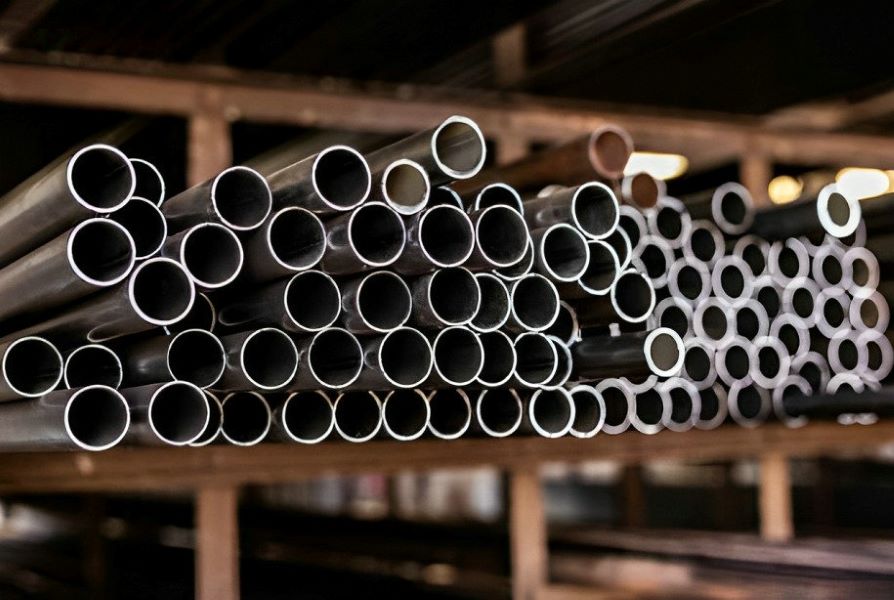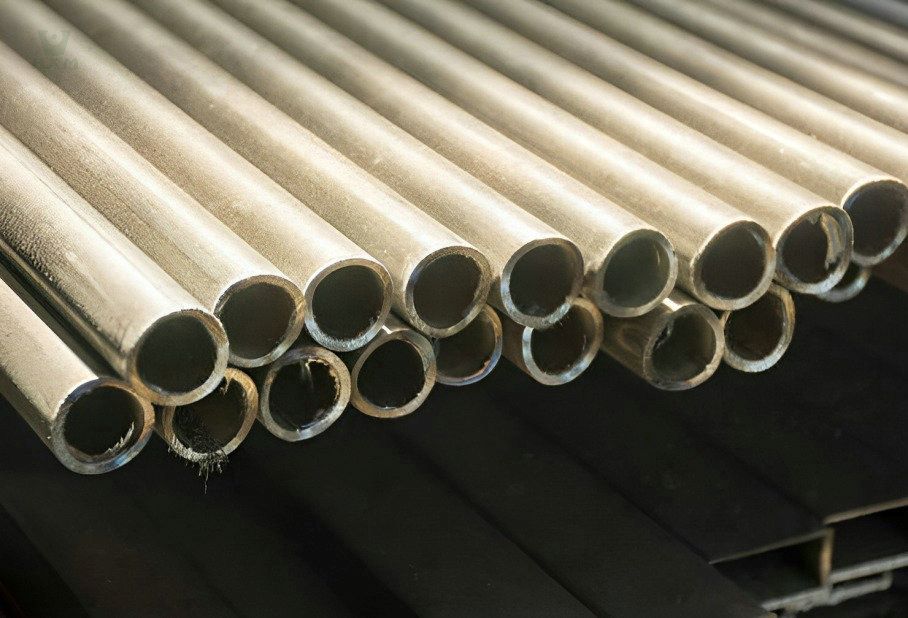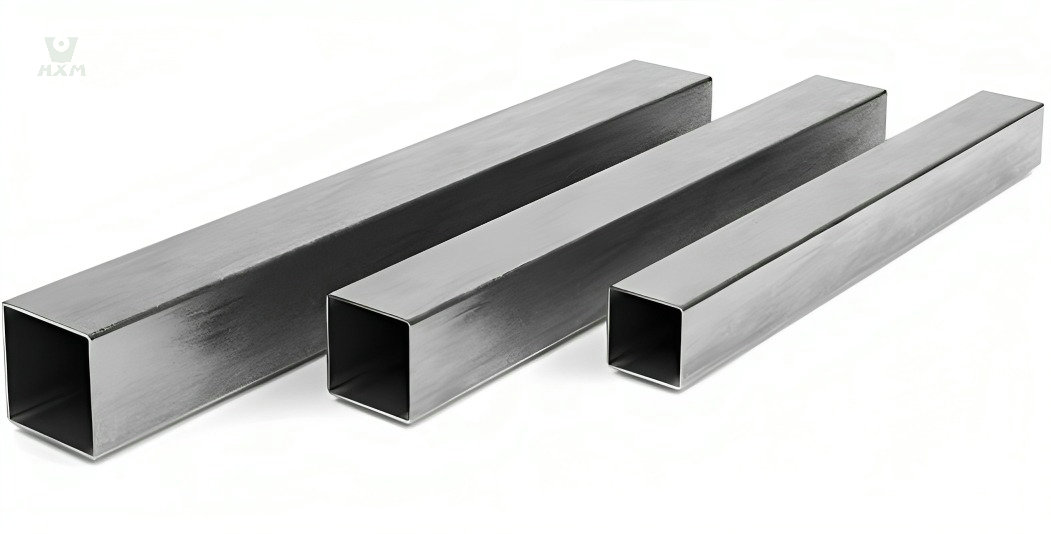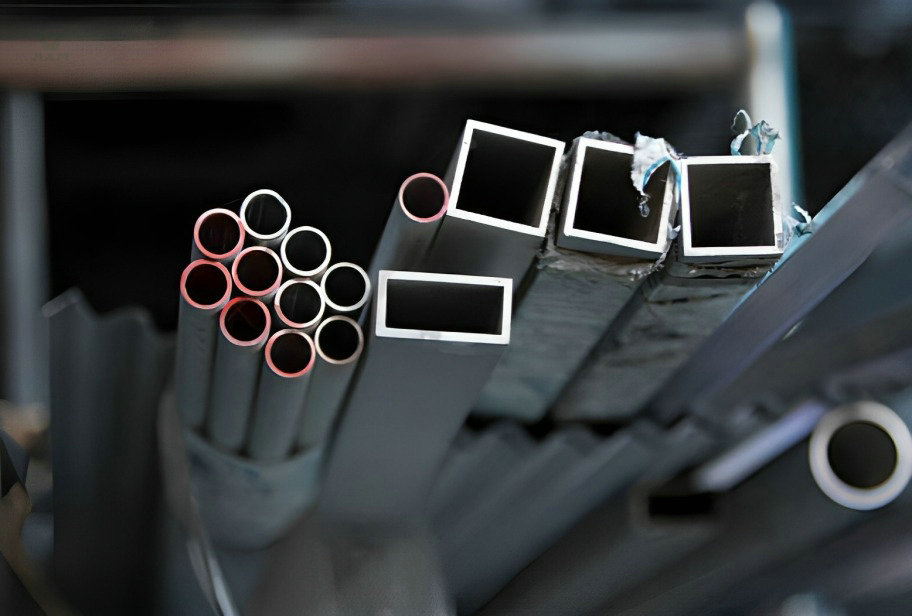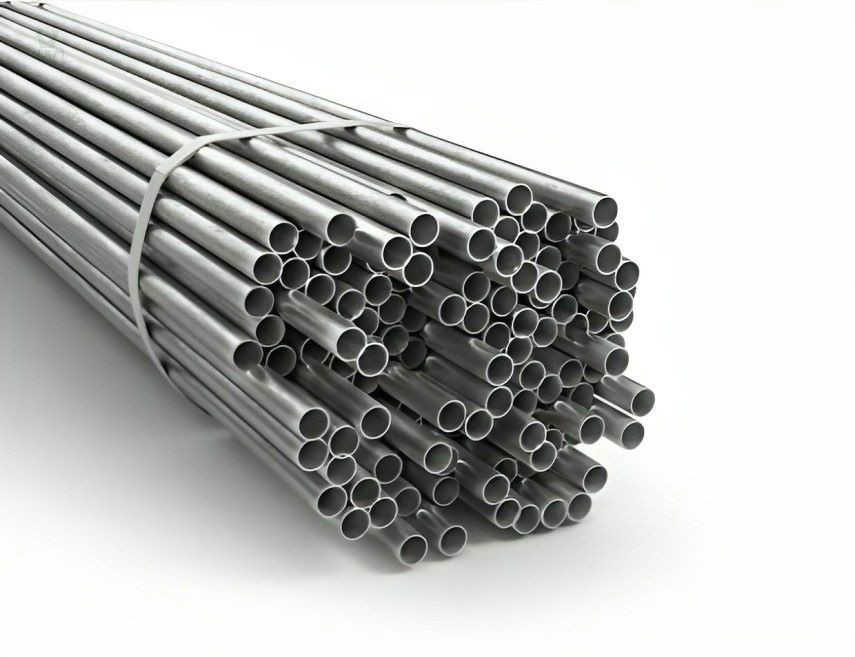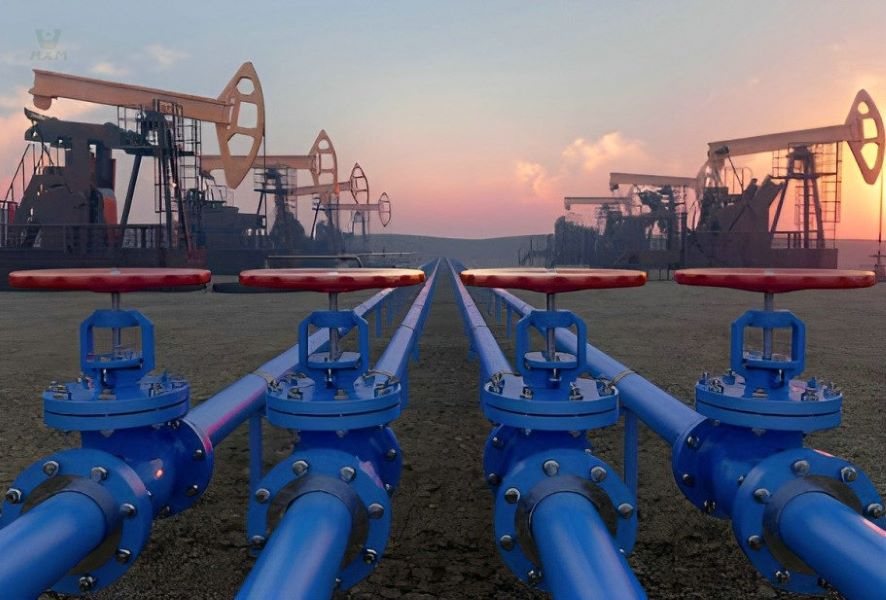Seamless Stainless Steel Pipe For Nuclear Power
Seamless stainless steel pipe for nuclear power plant is a kind of stainless steel pipe that can resist corrosion by air, steam, water and chemical corrosive media such as acid, alkali and salt. Because of the high material requirements for nuclear power plants, there is great interest in the production of stainless steel tubes.
Huaxiao stainless steel pipe suppliers produce and export seamless stainless steel pipes and tubes from mainland China to the United States, Europe and other countries and regions for use in automotive, boiler, petrochemical, power generation, nuclear energy and shipbuilding industries.
Product Description of Seamless Stainless Steel Pipe for nuclear power
Our Stainless Steel Pipes for nuclear power applications are meticulously engineered to meet the stringent requirements of the nuclear industry. Crafted with the highest quality stainless steel, these pipes offer exceptional corrosion resistance, high strength, and durability, ensuring the safe transport of fluids in nuclear power plants. With precision manufacturing and adherence to international standards, our pipes guarantee reliable performance in critical nuclear environments. Trust in our stainless steel pipes to contribute to the safety and efficiency of nuclear power operations.
specification of Seamless Stainless Steel Pipe for nuclear power
Production Standard
ASME/RCCM Specification or Customer Technology Agreement
GB/T 24512.1、GB/T 24512.1
Production Range
Norminal Pipe Size | Outside Diameter | Norminal Wall Thickness (mm) | |||||
NPS | in | BN | mm | SCH5s | SCH10s | SCH40s | SCH80s |
1/8 | 0.405 | 6 | 10.3 | — | 1.24 | 1.73 | 2.41 |
1/4 | 0.540 | 8 | 13.7 | — | 1.65 | 2.24 | 3.02 |
3/8 | 0.675 | 10 | 17.1 | — | 1.65 | 2.31 | 3.2 |
1/2 | 0.840 | 15 | 21.3 | 1.65 | 2.11 | 2.77 | 3.73 |
3/4 | 1.050 | 20 | 26.7 | 1.65 | 2.11 | 2.87 | 3.91 |
1 | 1.315 | 25 | 33.4 | 1.65 | 2.77 | 3.38 | 4.55 |
1 1/4 | 1.660 | 32 | 42.2 | 1.65 | 2.77 | 3.56 | 4.85 |
1 1/2 | 1.900 | 40 | 48.3 | 1.65 | 2.77 | 3.68 | 5.08 |
2 | 2.375 | 50 | 60.3 | 1.65 | 2.77 | 3.91 | 5.54 |
2 1/2 | 2.875 | 65 | 73.0 | 2.11 | 3.05 | 5.16 | 7.01 |
3 | 3.500 | 80 | 88.9 | 2.11 | 3.05 | 5.49 | 7.62 |
3 1/2 | 4.000 | 90 | 101.6 | 2.11 | 3.05 | 5.74 | 8.08 |
4 | 4.500 | 100 | 114.3 | 2.11 | 3.05 | 6.02 | 8.56 |
5 | 5.563 | 125 | 141.3 | 2.77 | 3.4 | 6.55 | 9.53 |
6 | 6.625 | 150 | 168.3 | 2.77 | 3.4 | 7.11 | 10.97 |
8 | 8.625 | 200 | 219.1 | 2.77 | 3.76 | 8.18 | 12.7 |
10 | 10.750 | 250 | 273.1 | 3.4 | 4.19 | 9.27 | 12.7 |
12 | 12.750 | 300 | 323.9 | 3.96 | 4.57 | 9.53 | 12.7 |
14 | 14.000 | 350 | 355.6 | 3.96 | 4.78 | 9.53 | — |
16 | 16.000 | 400 | 406.4 | 4.19 | 4.78 | 9.53 | — |
18 | 18.000 | 450 | 457.2 | 4.19 | 4.78 | 9.53 | — |
20 | 20.000 | 500 | 508.0 | 4.78 | 5.54 | 9.53 | — |
22 | 22.000 | 550 | 558.8 | 4.78 | 5.54 | — | — |
24 | 24.000 | 600 | 609.6 | 5.54 | 6.35 | 9.53 | — |
26 | 26.000 | 650 | 660.4 | — | — | — | — |
28 | 28.000 | 700 | 711.2 | — | — | — | — |
30 | 30.000 | 750 | 762.0 | 6.35 | 7.92 | — | — |
32 | 32.000 | 800 | 812.8 | — | 7.92 | — | — |
34 | 34.000 | 850 | 863.6 | — | 7.92 | — | — |
36 | 36.000 | 900 | 914.4 | — | 7.92 | — | — |
38 | 38.000 | 950 | 965.2 | — | — | — | — |
40 | 40.000 | 1000 | 1016.0 | — | 9.53 | — | — |
If you need more sizes, please consult with us | |||||||
Description in different standard
ASTM | DIN / EN | JIS | GB | ISO Name | Other |
S20100 201 | 1.4372 | SUS201 | S35350 | X12CrMnNiN17–7-5 | J1 L1 LH 201J1 |
S20200 202 | 1.4373 | SUS202 | S35450 | X12CrMnNiN18–9-5 | 202 L4, 202 J4, 202 J3 |
S30400 304 | 1.4301 | SUS304 | S30408 | X5CrNi18-10 | 06Cr19Ni10 0Cr18Ni9 |
S31603 316L | 1.4404 | SUS316L | S31603 | X2CrNiMo17-12-2 | 022Cr17Ni12Mo2 00Cr17Ni14Mo2 |
S40900 409 | – | SUH409 | S11168 | X5CrTi12 | 0Cr11Ti |
S40910 409L | 1.4512 | SUH409L | S11163 | X2CrTi12 | 00Cr11Ti 022Cr11Ti |
S41008 410S | 1.4000 | SUS410S | S11306 | X6Cr13 | – |
S43000 430 | 1.4016 | SUS430 | 10Cr17 | X6Cr17 | 1Cr17 |
The chemical component in different standard
201 | C % | Si% | Mn % | P % | S % | Ni % | Cr % | N % | Mo % |
ASTM | 0.15 | 1.00 | 5.5-7.5 | 0.050 | 0.030 | 3.5-5.5 | 16.0-18.0 | 0.25 | – |
DIN/EN | 0,15 | 1,00 | 5,5-7,5 | 0,045 | 0,015 | 3,5-5,5 | 16,0-18,0 | 0,05-0,25 | – |
JIS | 0.15 | 1.00 | 5.5-7.5 | 0.060 | 0.030 | 3.5-5.5 | 16.0-18.0 | 0.25 | – |
GB | 0.15 | 1.00 | 5.5-7.5 | 0.050 | 0.030 | 3.5-5.5 | 16.0-18.0 | 0.05-0.25 | – |
202 | C % | Si% | Mn % | P % | S % | Ni % | Cr % | N % | Mo % |
ASTM | 0.15 | 1.00 | 7.5-10.0 | 0.060 | 0.030 | 4.0-6.0 | 17.0-19.0 | 0.25 | – |
DIN/EN | 0,15 | 1,00 | 7,5-10,5 | 0,045 | 0,015 | 4,0-6,0 | 17,0-19,0 | 0,05-0,25 | – |
JIS | 0.15 | 1.00 | 7.5-10.0 | 0.060 | 0.030 | 4.0-6.0 | 17.0-19.0 | 0.25 | – |
GB | 0.15 | 1.00 | 7.5-10.0 | 0.050 | 0.030 | 4.0-6.0 | 17.0-19.0 | 0.05-0.25 | – |
304 | C % | Si% | Mn % | P % | S % | Ni % | Cr % | N % | Mo % |
ASTM | 0.08 | 0.75 | 2.00 | 0.045 | 0.030 | 8.0 – 10.5 | 18.0-20.0 | 0.10 | – |
DIN/EN | 0,07 | 1,00 | 2,00 | 0,045 | 0,015 | 8,0 – 10,5 | 17,5-19,5 | 0,10 | – |
JIS | 0.08 | 1.00 | 2.00 | 0.045 | 0.030 | 8.0 – 10.5 | 18.0-20.0 | – | – |
GB | 0.08 | 1.00 | 2.00 | 0.045 | 0.030 | 8.0 – 10.0 | 18.0-20. 0 | – | – |
316L | C % | Si% | Mn % | P % | S % | Ni % | Cr % | N % | Mo % |
ASTM | 0.030 | 0.75 | 2.00 | 0.045 | 0.030 | 10.0-14.0 | 16.0-18.0 | 0.10 | 2.00-3.00 |
DIN/EN | 0,030 | 1,00 | 2,00 | 0,045 | 0,015 | 10,0-13,0 | 16,5-18,5 | 0,10 | 2,00-2,50 |
JIS | 0.030 | 1.00 | 2.00 | 0.045 | 0.030 | 12.0-15.0 | 16.0-18.0 | – | 2.00-3.00 |
GB | 0.030 | 0.75 | 2.00 | 0.045 | 0.030 | 10.0-14.0 | 16.0-18.0 | 0.10 | 2.00-3.00 |
409 | C % | Si% | Mn % | P % | S % | Ni % | Cr % | N % | Ti % |
ASTM | 0.08 | 1.00 | 1.00 | 0.045 | 0.03 | 0.50 | 10.5-11.7 | – | 6*C% – 0.75 |
DIN/EN | – | – | – | – | – | – | – | – | – |
JIS | 0.08 | 1.00 | 1.00 | 0.040 | 0.030 | – | 10.5-11.7 | – | 6*C% – 0.75 |
GB | 0.08 | 1.00 | 1.00 | 0.045 | 0.030 | 0.60 | 10.5-11.7 | – | 6*C% – 0.75 |
409L | C % | Si% | Mn % | P % | S % | Ni % | Cr % | N % | Ti % |
ASTM | 0.03 | 1.00 | 1.00 | 0.040 | 0.020 | 0.50 | 10.5-11.7 | 0.03 | 6*(C+N)-0.5 |
DIN/EN | 0.03 | 1.00 | 1.00 | 0.040 | 0.015 | – | 10.5-12.5 | – | 6*(C+N)-0.65 |
JIS | 0.03 | 1.00 | 1.00 | 0.040 | 0.030 | – | 10.5-11.7 | – | 6*C% – 0.75 |
GB | 0.03 | 1.00 | 1.00 | 0.040 | 0.020 | – | 10.5-11.7 | 0.03 | Ti≥8*(C+N) |
410S | C % | Si% | Mn % | P % | S % | Ni % | Cr % | N % | Mo % |
ASTM | 0.08 | 1.00 | 1.00 | 0.040 | 0.030 | 0.60 | 11.5-13.5 | – | – |
DIN/EN | 0,08 | 1,00 | 1,00 | 0,040 | 0,015 | – | 12,0-14,0 | – | – |
JIS | 0.08 | 1.00 | 1.00 | 0.040 | 0.030 | – | 11.5-13.5 | – | – |
GB | 0.08 | 1.00 | 1.00 | 0.040 | 0.030 | 0.60 | 11.5-13.5 | – | – |
Mechanical property in different standard
201 | Y.S./Mpa ≥ | T.S./Mpa ≥ | E.L./% ≥ | HB ≤ | HRB ≤ | HBW ≤ | HV ≤ |
ASTM | 260 | 515 | 40 | – | 95 | 217 | – |
JIS | 275 | 520 | 40 | 241 | 100 | – | 253 |
GB | 205 | 515 | 30 | - | 99 | – | - |
202 | Y.S./Mpa ≥ | T.S./Mpa ≥ | E.L./% ≥ | HB ≤ | HRB ≤ | HBW ≤ | HV ≤ |
ASTM | 260 | 620 | 40 | – | – | 241 | – |
JIS | 275 | 520 | 40 | – | 95 | 207 | 218 |
GB | – | – | – | – | – | – | – |
304 | Y.S./Mpa ≥ | T.S./Mpa ≥ | E.L./% ≥ | HB ≤ | HRB ≤ | HBW ≤ | HV ≤ |
ASTM | 205 | 515 | 40 | – | 92 | 201 | – |
JIS | 205 | 520 | 40 | 187 | 90 | – | 200 |
GB | 205 | 515 | 40 | – | 92 | 201 | 210 |
316L | Y.S./Mpa ≥ | T.S./Mpa ≥ | E.L./% ≥ | HB ≤ | HRB ≤ | HBW ≤ | HV ≤ |
ASTM | 170 | 485 | 40 | – | 95 | 217 | – |
JIS | 175 | 480 | 40 | 187 | 90 | 200 | |
GB | 170 | 485 | 40 | – | 95 | 217 | 220 |
409 | Y.S./Mpa ≥ | T.S./Mpa ≥ | E.L./% ≥ | HB ≤ | HRB ≤ | HBW ≤ | HV ≤ |
ASTM | – | – | – | – | – | – | – |
JIS | 175 | 360 | 22 | 162 | 80 | – | 175 |
GB | – | – | – | – | – | – | – |
409L | Y.S./Mpa ≥ | T.S./Mpa ≥ | E.L./% ≥ | HB ≤ | HRB ≤ | HBW ≤ | HV ≤ |
ASTM | 170 | 380 | 20 | – | 88 | 179 | – |
JIS | 175 | 360 | 25 | 162 | 80 | – | 175 |
GB | 170 | 380 | 20 | – | 88 | 179 | 200 |
410S | Y.S./Mpa ≥ | T.S./Mpa ≥ | E.L./% ≥ | HB ≤ | HRB ≤ | HBW ≤ | HV ≤ |
ASTM | 205 | 415 | 22 | – | 89 | 183 | – |
JIS | 205 | 410 | 20 | – | 88 | 183 | 200 |
GB | 205 | 415 | 20 | – | 89 | 183 | 200 |
Features of Seamless Stainless Steel Pipe for nuclear power
The seamless stainless steel pipes designed for nuclear power applications boast remarkable features, prominently including their exceptional resistance to oxidizing media. This high corrosion resistance ensures reliable and durable performance even in challenging environments, safeguarding the integrity and safety of nuclear power systems. Our seamless stainless steel pipes provide a critical component for maintaining the efficiency and longevity of nuclear power facilities.
Another notable feature of the seamless stainless steel pipes for nuclear power is their relative ease of decontamination. This characteristic is crucial for maintaining the cleanliness and safety of nuclear environments. The stainless steel surface can be efficiently cleaned and decontaminated, reducing the potential risks associated with radioactive materials and ensuring the proper functioning of nuclear power facilities.
The seamless stainless steel pipes for nuclear power exhibit excellent impact resistance, even in sub-zero temperatures. This crucial attribute ensures the structural integrity and reliability of the pipes, allowing them to withstand harsh conditions that might be encountered in nuclear power plants. This exceptional impact resistance contributes to the overall safety and performance of nuclear facilities.
These seamless stainless steel pipes for nuclear power are readily available, ensuring a timely supply for various nuclear projects and applications. This availability streamlines the procurement process and supports efficient project execution, making them a dependable choice for nuclear power infrastructure.
These seamless stainless steel pipes for nuclear power offer ease of welding and fabrication, facilitating efficient assembly and construction processes. This feature enhances the overall project timeline and ensures the seamless integration of these pipes into nuclear power systems and structures.
application of Seamless Stainless Steel Pipe for nuclear power
Stainless steel is an important material in the nuclear industry due to its ability to withstand the hostile conditions found in nuclear power plants. It is used extensively in nearly every area of a standard nuclear power plant system, both big and small.
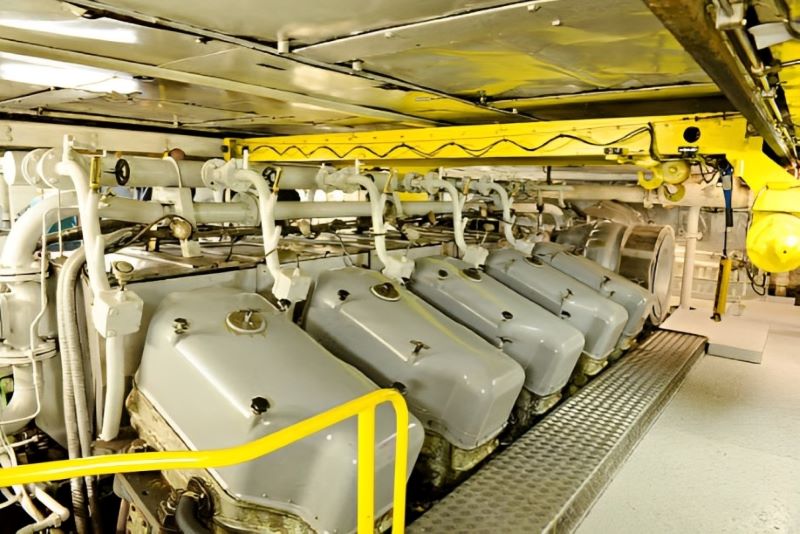
Transporting Coolant
Seamless stainless steel pipes are integral components in nuclear power plants, specifically designed for efficiently conveying coolant. These pipes ensure the smooth transfer of cold coolant from external sources into the reactor vessel, where it absorbs excess heat generated during nuclear reactions. Additionally, they transport hot coolant from the reactor to the steam generator, where it produces steam to drive turbines and generate electricity. The use of high-quality seamless stainless steel pipes, sourced from reliable stainless steel pipe suppliers, is essential to maintaining the integrity and safety of the cooling systems in nuclear power plants, ensuring optimal heat exchange and preventing leaks or contamination.
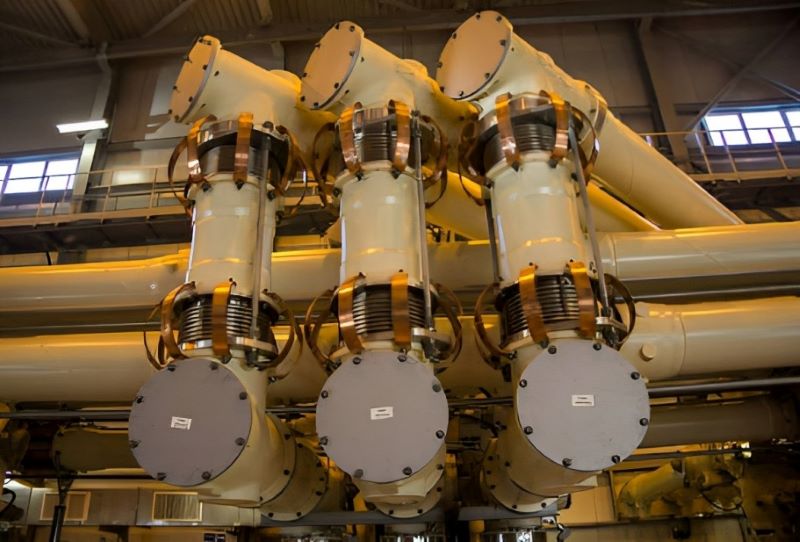
Pressure Tubes
Seamless stainless steel pipes are extensively used as pressure tubes in nuclear power plants. These tubes serve a crucial role in containing and transporting high-pressure coolant or other fluids within the reactor system. They are carefully manufactured to withstand extreme pressure and temperature conditions, ensuring the safety and efficiency of nuclear reactors. Sourced from reliable stainless steel pipe suppliers, these seamless pipes are engineered to meet strict quality and safety standards, making them a vital component in the reliable operation of nuclear power facilities.
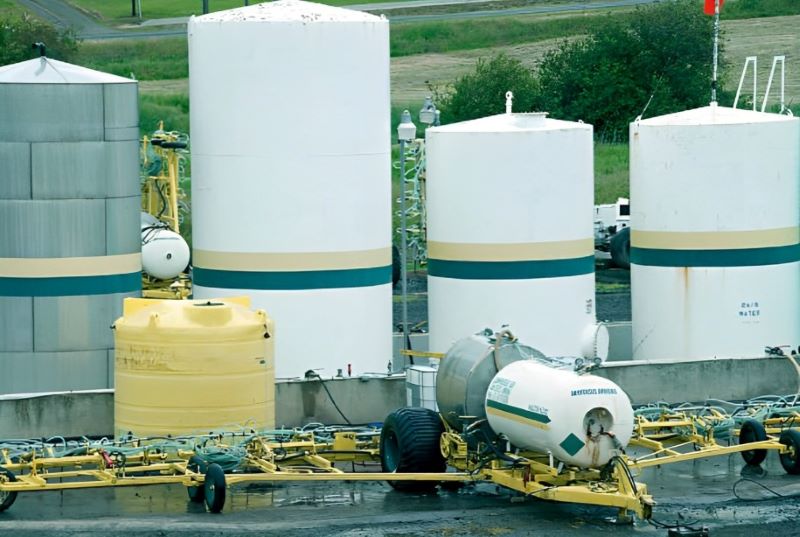
Containment Vessels
Seamless stainless steel pipes play a crucial role in the construction of containment vessels within nuclear power plants. These vessels are designed to provide a robust and secure barrier that prevents the release of radioactive materials in the event of a reactor accident. Seamless stainless steel pipes are used in the fabrication of the containment vessel structure, contributing to its strength, durability, and resistance to corrosion. These pipes ensure the integrity of the vessel's walls and seals, helping to maintain a safe environment within the containment area. Sourced from reputable stainless steel pipe suppliers, these pipes are a critical component in ensuring the safety and reliable operation of nuclear power plants.
Austenitic stainless steel, mainly 304L and 316L grades, is often the top choice for operators and engineers as it is thought to be the most effective in hot and corrosive environments. 304L stainless steel is regularly utilized for process-related applications, whereas 316L is thought to be more appropriate for fission storage.
FAQ
Yes, seamless stainless steel pipes are highly suitable for high-temperature and high-pressure environments in nuclear power plants. These pipes are specifically engineered to withstand the extreme conditions present in nuclear applications. Their exceptional corrosion resistance, mechanical strength, and integrity make them an ideal choice for transporting coolant, steam, and other fluids within primary and secondary cooling systems, as well as for various critical components such as pressure vessels and containment vessels. The seamless manufacturing process ensures uniformity, reliability, and enhanced resistance to stress corrosion cracking, making them a reliable and durable solution for the demanding conditions of nuclear power plants.
The manufacturing of seamless stainless steel pipes for nuclear power plants follows stringent standards and specifications to ensure safety and reliability. These standards include:
- ASME Boiler and Pressure Vessel Code (BPVC): This code provides guidelines for the design, fabrication, and inspection of pressure vessels and related components used in nuclear power plants.
- ASTM International Standards: ASTM A312/A312M is a common specification for seamless stainless steel pipes used in high-temperature and corrosive environments, including nuclear applications.
- Nuclear Regulatory Commission (NRC) Regulations: NRC regulations govern the design, construction, and operation of nuclear facilities, including the materials used in their components.
- International Atomic Energy Agency (IAEA) Standards: IAEA establishes guidelines for the safe and secure use of nuclear materials and technologies, which may include specifications for materials like stainless steel.
- Specific Nuclear Plant Requirements: Each nuclear power plant may have its own set of requirements and specifications that manufacturers must adhere to, ensuring compatibility with plant systems.
The seamless stainless steel pipes used in nuclear power applications are manufactured to meet these standards, ensuring they possess the necessary qualities of corrosion resistance, high-temperature performance, and structural integrity required for safe and reliable operation in such environments.
The choice of stainless steel grade significantly impacts the performance of seamless pipes in nuclear applications. Stainless steel pipe suppliers play a crucial role in providing suitable materials. Here’s how different grades affect performance:
- Corrosion Resistance: Stainless steel’s resistance to corrosion is vital in nuclear environments with high temperatures and radiation exposure. Grades like 316L and 304L offer excellent corrosion resistance, ensuring pipes maintain structural integrity over time.
- High-Temperature Performance: Stainless steel grades with high chromium and nickel content, such as 310S, exhibit exceptional high-temperature strength and oxidation resistance, crucial in nuclear reactors.
- Radiation Resistance: Certain stainless steel grades, like 304L and 316L, demonstrate good radiation resistance due to their composition, making them suitable for containing radioactive fluids.
- Creep and Stress Rupture: Grades with enhanced creep resistance, like 347H, maintain mechanical properties under sustained high temperatures, critical in pressure vessel applications.
- Weldability: Stainless steel grades that are easily weldable, such as 304 and 316 series, facilitate construction and maintenance, ensuring reliable connections.
- Neutron Absorption: Some grades, like 316L, possess low neutron absorption, minimizing interference with nuclear reactions and ensuring accurate measurements.
- Hydrogen Embrittlement: Grades like 321 and 347 are selected to avoid hydrogen embrittlement, a concern in pressurized water reactors.
- Cost vs. Performance: Balancing cost and performance is essential. While high-performance alloys offer excellent attributes, less expensive grades can still meet safety and regulatory requirements.
Stainless steel pipe suppliers play a crucial role in recommending appropriate grades based on the specific demands of nuclear applications, ensuring seamless pipes offer reliable, durable, and safe performance within nuclear power plants.
Seamless stainless steel pipes used in nuclear environments are carefully selected to minimize susceptibility to stress corrosion cracking (SCC). The choice of stainless steel grade, surface finish, and operating conditions all contribute to SCC resistance. Stainless steel pipe suppliers ensure that the selected grades, such as 304L, 316L, or 347H, exhibit excellent SCC resistance through:
- Chemical Composition: Low-carbon grades reduce sensitization and susceptibility to SCC, as carbon can contribute to intergranular corrosion.
- Surface Finish: Smooth and properly passivated surfaces mitigate the initiation and propagation of cracks, reducing the risk of SCC.
- Operating Conditions: Proper temperature, pressure, and chemical control help avoid conditions that promote SCC.
- Welding Practices: Proper welding procedures, filler materials, and post-weld heat treatments minimize potential SCC sites.
- Stress Relief: Controlled stress relief treatments after fabrication reduce residual stresses and enhance SCC resistance.
- Water Chemistry Control: In pressurized water reactors, maintaining suitable water chemistry prevents conditions that trigger SCC.
While SCC cannot be entirely eliminated, meticulous material selection, fabrication, and operational practices, along with continuous monitoring and inspection, ensure that seamless stainless steel pipes exhibit high resistance to SCC in nuclear environments. Stainless steel pipe suppliers play a crucial role in providing guidance and materials that meet stringent SCC requirements for nuclear applications.
Yes, seamless stainless steel pipes are commonly used in both primary and secondary cooling systems of nuclear reactors. Stainless steel pipe suppliers offer a wide range of stainless steel grades that are suitable for various parts of nuclear reactors, including both primary and secondary cooling systems.
For the primary cooling system, which involves direct contact with the reactor coolant and operates at higher temperatures and radiation levels, stainless steel grades with high corrosion resistance and irradiation tolerance, such as 304L, 316L, or 347H, are often utilized.
In the secondary cooling system, which transfers heat from the primary coolant to generate steam for power generation, stainless steel pipes with appropriate mechanical properties and corrosion resistance are selected. The choice of grade depends on factors such as temperature, pressure, and the nature of the fluids being circulated.
Stainless steel pipe suppliers play a vital role in providing the suitable grades and specifications needed for both primary and secondary cooling systems, ensuring the reliable and safe operation of nuclear reactors.
To prolong the service life of seamless stainless steel pipes in nuclear power plants, several maintenance practices are recommended:
- Regular Inspection: Conduct routine inspections of the pipes to identify any signs of corrosion, erosion, or other forms of degradation. This helps detect issues early and prevent further damage.
- Corrosion Monitoring: Implement a comprehensive corrosion monitoring program to assess the corrosion rate and potential areas of concern. Utilize techniques such as ultrasonic testing, radiographic inspection, and visual examination.
- Cleaning and Decontamination: Regularly clean and decontaminate the pipes to remove any potential contaminants that could accelerate corrosion or other forms of deterioration.
- Passivation: Apply passivation treatments to restore the protective oxide layer on the stainless steel surface, enhancing its resistance to corrosion.
- Material Compatibility: Ensure that any materials or fluids in contact with the pipes are compatible with the specific stainless steel grade used to prevent any chemical reactions that could lead to corrosion.
- Temperature and Pressure Management: Operate the pipes within the specified temperature and pressure ranges to avoid overstressing the material, which can lead to premature failure.
- Fluid Quality: Maintain high-quality fluids circulating through the pipes to prevent fouling, scaling, or other forms of buildup that can impact the pipe’s performance and lifespan.
- Regular Maintenance Schedule: Develop and adhere to a regular maintenance schedule that includes cleaning, inspection, testing, and potential repairs or replacements.
- Emergency Response Plan: Have a well-defined emergency response plan in place to address any unexpected issues promptly and minimize potential damage.
- Supplier Collaboration: Collaborate with stainless steel pipe suppliers to ensure you are using the right materials and following best practices for installation, operation, and maintenance.
By following these maintenance practices, nuclear power plants can maximize the service life of seamless stainless steel pipes and ensure the safe and reliable operation of their facilities.
Radiation exposure can gradually affect the mechanical properties of seamless stainless steel pipes over time in nuclear power plant applications. The impact of radiation on stainless steel is primarily attributed to the displacement of atoms within the material’s crystal lattice due to high-energy particles from the radiation. This can lead to various changes in the material’s properties:
- Hardening: Irradiation can cause the stainless steel to become harder over time. This phenomenon, known as radiation hardening, is characterized by an increase in yield strength and hardness, potentially affecting the material’s ductility and toughness.
- Embrittlement: Radiation can lead to embrittlement, making the stainless steel more susceptible to brittle fracture. This is particularly concerning in scenarios where the pipes may experience sudden impact or stress.
- Microstructural Changes: The atomic displacement caused by radiation can result in changes in the material’s microstructure, such as the formation of small defect clusters or voids. These microstructural changes can influence mechanical properties.
- Creep and Stress Relaxation: Radiation exposure can alter the behavior of creep, which is the time-dependent deformation of a material under stress at elevated temperatures. This may impact the long-term stability and integrity of the pipes.
- Corrosion: Radiation-enhanced corrosion and stress corrosion cracking can occur, affecting the corrosion resistance and potentially leading to material degradation and leaks.
- Fatigue Performance: Radiation-induced microstructural changes can impact the fatigue performance of stainless steel, potentially reducing its fatigue strength and increasing the susceptibility to fatigue failure.
Stainless steel pipe suppliers play a crucial role in providing materials that are specifically designed to withstand the challenging conditions of nuclear environments. Manufacturers consider radiation effects when developing stainless steel grades for nuclear applications, aiming to minimize the negative impact of radiation on mechanical properties. Regular inspections, monitoring, and maintenance are essential to ensure the continued safe operation of seamless stainless steel pipes in nuclear power plants despite the effects of radiation exposure.
Stainless steel pipes for nuclear power are manufactured to meet the high standards required for use in a reactor environment. These pipes must be able to withstand the high pressures and temperatures, as well as the corrosive nature of the coolant used in nuclear power plants.
The process of manufacturing stainless steel pipes for nuclear power involves several steps. First, the raw materials, such as iron, nickel, and chromium, are melted together in an electric furnace. The molten metal is then poured into molds to form ingots or slabs, which are then hot-rolled into the desired shape.
After hot-rolling, the pipes are heat-treated to improve their mechanical properties and corrosion resistance. This involves heating the pipes to a high temperature and then rapidly cooling them in water or air. The pipes are then cold-worked to achieve the desired dimensions and surface finish.
Finally, the pipes are tested to ensure that they meet the required standards for use in nuclear power plants. This includes tests for mechanical properties, such as tensile strength and hardness, as well as tests for corrosion resistance.
There are various grades of stainless steel seamless pipes for nuclear power plants. For example, GB 24512.1 specifies the grades of carbon and alloy seamless steel tubes for nuclear power plant islands and conventional islands, including HD245, HD245Cr1.GB 24512.2 specifies the grades of carbon and alloy seamless steel tubes for nuclear power plant islands and conventional islands, including HD265, HD265Cr2.In addition, there are other grades, such as HD280, HD280Cr, HD12Cr2Mo, HD15Ni1MnMoNbCu, TUE250B, RCC-M, TU42C, TU48C, P280GH, SA106B/C and so on.
Other Products
Get In touch
Ready to Elevate Your Projects? Dive into our Stainless Steel Collection and Submit Your Specifications Today!
Phone/WeChat: +86 13381673250
Email: [email protected]
Address: RM557, NO.1388 Jiangyue Road, Shanghai China


